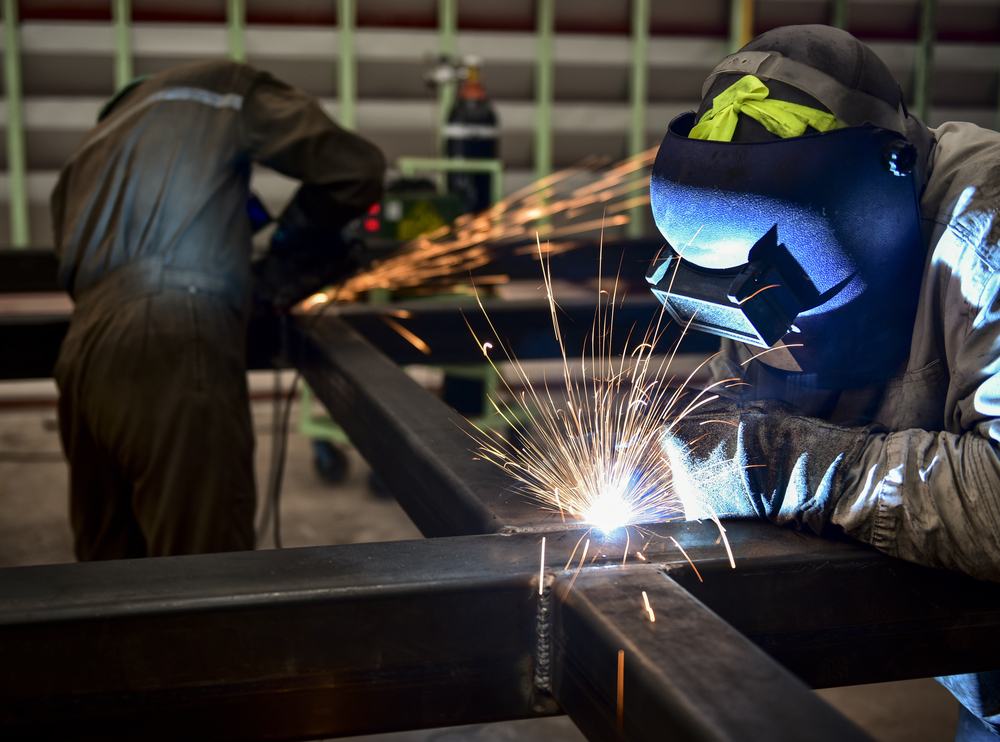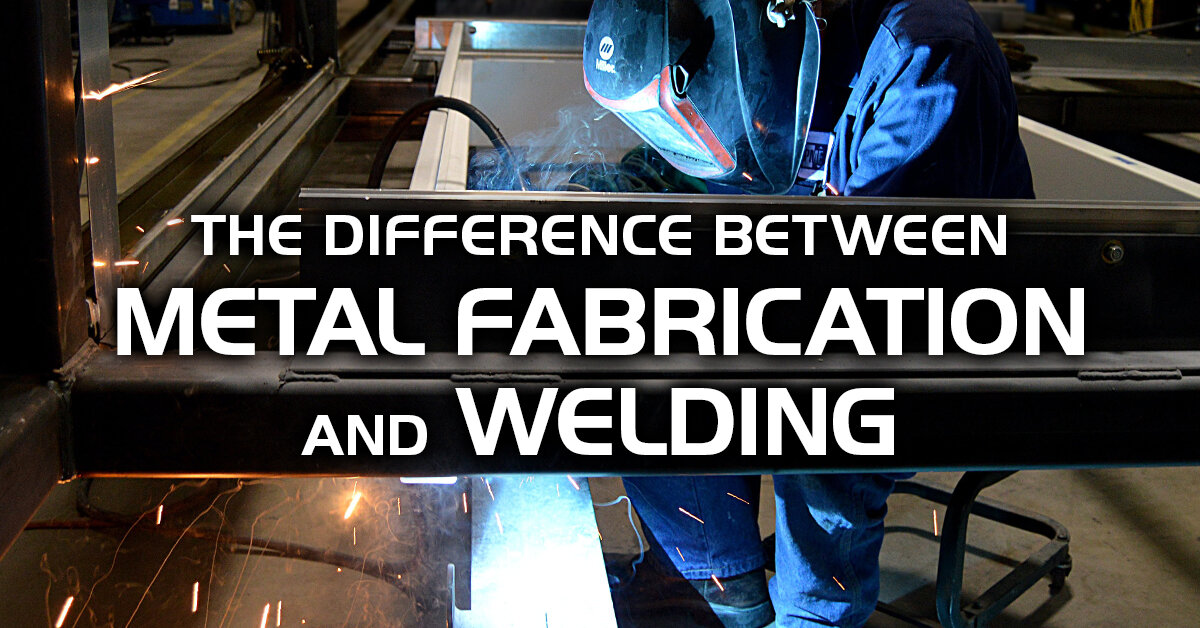All About Welding: Key Insights Into Techniques and Finest Practices for Success
Welding includes a range of strategies, each matched for details products and applications. Understanding these methods, such as GMAW, SMAW, and TIG, is necessary for accomplishing perfect results. The right equipment and safety techniques can not be forgotten. As prep work and fixing play important functions in the welding process, mastering these components can significantly enhance the high quality of the final product. What are the vital factors that guarantee a successful weld?
Comprehending Various Welding Strategies
Welding methods encompass a variety of methods, each suited to specific applications and materials. Among one of the most typical techniques are Gas Steel Arc Welding (GMAW), Protected Metal Arc Welding (SMAW), and Tungsten Inert Gas Welding (TIG) GMAW, additionally understood as MIG welding, is popular for its rate and convenience, making it excellent for slim materials. SMAW, or stick welding, is favored for its simplicity and effectiveness in outdoor atmospheres, especially with thicker metals. TIG welding uses precision and control, making it appropriate for intricate job and non-ferrous metals (Montana Mobile Welding and Repair Belgrade Fabrication). Each technique has its distinct advantages and considerations, permitting welders to choose the ideal method based upon the project's demands, product type, and desired results. Understanding these methods is essential for successful welding
Necessary Welding Equipment and Tools
While numerous welding strategies require details skills, the best devices and devices are just as important for accomplishing top quality outcomes. Important welding devices consists of welding devices, which differ relying on the technique-- such as MIG, TIG, or stick welding. Protective gear, including handwear covers, aprons, and headgears, warranties safety and comfort during the process. Furthermore, clamps and fixtures assist secure products in area, making certain precision in welds. Consumables like welding poles, wire, and protecting gas are also vital parts that influence the high quality of the weld. Devices such as mills and cutters facilitate surface area prep work and post-weld ending up, adding to an expert result. Purchasing top notch devices inevitably boosts the efficiency and effectiveness of welding tasks.
Safety Practices in Welding
Appropriate safety practices are necessary in the welding market to secure workers from potential risks. Welders should put on suitable personal protective tools (PPE), including helmets with proper shading, handwear covers, and flame-resistant apparel. Ample ventilation is important to minimize exposure to unsafe fumes and gases generated during the welding process. In addition, workers need to be learnt the appropriate handling of welding tools to stop accidents. Fire precaution, such as keeping combustible products far from the welding area and having fire extinguishers easily offered, are needed. Normal evaluations of devices and work spaces can assist recognize possible threats before they lead to crashes. By adhering to these security techniques, welders can produce a much safer working setting and minimize dangers connected with their trade.
Readying Materials for Welding
Preparing materials for welding is an essential step that substantially affects the high quality and stability of the end product (Fabrication). Appropriate prep work includes cleaning the surfaces to remove pollutants such as oil, corrosion, and dirt, which can compromise the weld. Strategies such as grinding, sanding, or using solvents are commonly utilized to accomplish a clean surface. Furthermore, making certain that the products fit with each other snugly is crucial; voids can bring about weak welds. It's additionally important to take into account the alignment and positioning of the components, as this will certainly influence the convenience of welding and the last end result. Ultimately, picking the ideal filler product and cnc welding making certain compatibility with the base steels is essential for attaining solid, long lasting welds
Tips for Getting High-Quality Welds
Accomplishing top quality welds calls for attention to information and adherence to best methods throughout the welding procedure. Appropriate joint preparation is vital, making certain surfaces are cost-free and tidy from pollutants. Selecting the proper filler material and welding method based upon the base metals is essential for optimal bonding. Keeping consistent travel rate and angle while welding can protect against problems and advertise harmony. In addition, controlling warm input is essential; extreme warmth can lead to warping and damaged joints. If needed, regularly examining the welds throughout the procedure enables for instant modifications. Ultimately, using appropriate post-weld treatments, such as cleaning and stress relief, can enhance the longevity and honesty of the weld, ultimately guaranteeing an effective end result.
Repairing Common Welding Issues
Welding commonly provides difficulties that can affect the quality and honesty of the last item. Common issues such as porosity, inconsistent weld beads, and overheating can arise, each calling for details fixing methods. Comprehending these issues is necessary for welders to improve their skills and achieve ideal outcomes.
Porosity Issues Discussed
Although porosity can typically be ignored, it remains a vital problem in welding that can compromise the stability of a completed item. Porosity describes the presence of tiny gas pockets within the weld bead, which can damage the joint and lead to early failure. This trouble commonly occurs from impurities, moisture, or inappropriate shielding gas insurance coverage during the welding procedure. To reduce porosity, welders need to verify that the base products are clean and completely dry, make use of suitable protecting gases, and keep consistent welding specifications. Frequently evaluating the equipment and atmosphere can likewise aid identify prospective problems prior to they materialize in the weld. Attending to porosity properly is crucial for achieving solid, durable welds that fulfill quality criteria.

Inconsistent Weld Beads
Inconsistent weld grains can substantially affect the high quality and stamina of a finished product. Numerous aspects add to this issue, consisting of incorrect travel rate, inaccurate amperage settings, and inconsistent electrode angles. When the welder relocates also promptly, a grain might show up narrow and lack penetration, while moving also gradually can trigger extreme build-up. Additionally, utilizing the incorrect amperage can cause either undercutting welder fabricator or excessive spatter, both of which concession weld integrity. The welder's method, such as inconsistent torch motion, can also bring about irregular grain appearance. To alleviate these problems, welders must focus on maintaining steady, controlled movements and making certain appropriate tools settings to achieve harmony in their welds. Uniformity is crucial to accomplishing strong and trusted welds.
Overheating and Bending Issues
Too much heat during the welding procedure can bring about considerable overheating and warping concerns, influencing the architectural stability of the work surface. These problems usually manifest as distortion, which can endanger positioning and fit-up, making additional assembly testing. Elements adding to overheating consist of the choice of welding specifications, such as voltage and take a trip rate, along with the kind of material being welded. To minimize look here these concerns, welders should maintain consistent traveling speed and suitable warmth input while keeping an eye on the work surface temperature. Furthermore, pre-heating or post-weld warmth therapy can aid reduce stress and anxieties brought on by fast air conditioning - Welding. Regular inspection and adherence to best practices are important in avoiding overheating and ensuring the longevity and integrity of bonded frameworks
Often Asked Questions
What Are the Career Opportunities in the Welding Industry?
The welding sector uses diverse career opportunities, consisting of placements as welders, designers, teachers, and examiners. Professionals can function in manufacturing, building, aerospace, and auto sectors, profiting from strong demand and competitive wages in numerous duties.
Exactly How Can I Improve My Welding Rate Without Compromising Quality?
To enhance welding speed without giving up quality, one need to practice efficient methods, maintain devices, optimize setups, and enhance hand-eye control. Regular training and looking for feedback can likewise greatly add to achieving much faster, top notch welds.
What Accreditations Are Readily Available for Welders?
Various qualifications exist for welders, including those from the American Welding Culture (AWS), the National Facility for Construction Education And Learning and Research Study (NCCER), and numerous industry-specific organizations. These qualifications boost employability and demonstrate ability proficiency.
Exactly How Does Welding Influence the Features of Metals?
Welding affects the buildings of metals by altering their microstructure, which can cause changes in solidity, strength, and ductility. Heat input and cooling prices throughout the procedure greatly impact these material features.
Can I Bonded Dissimilar Metals With Each Other?
